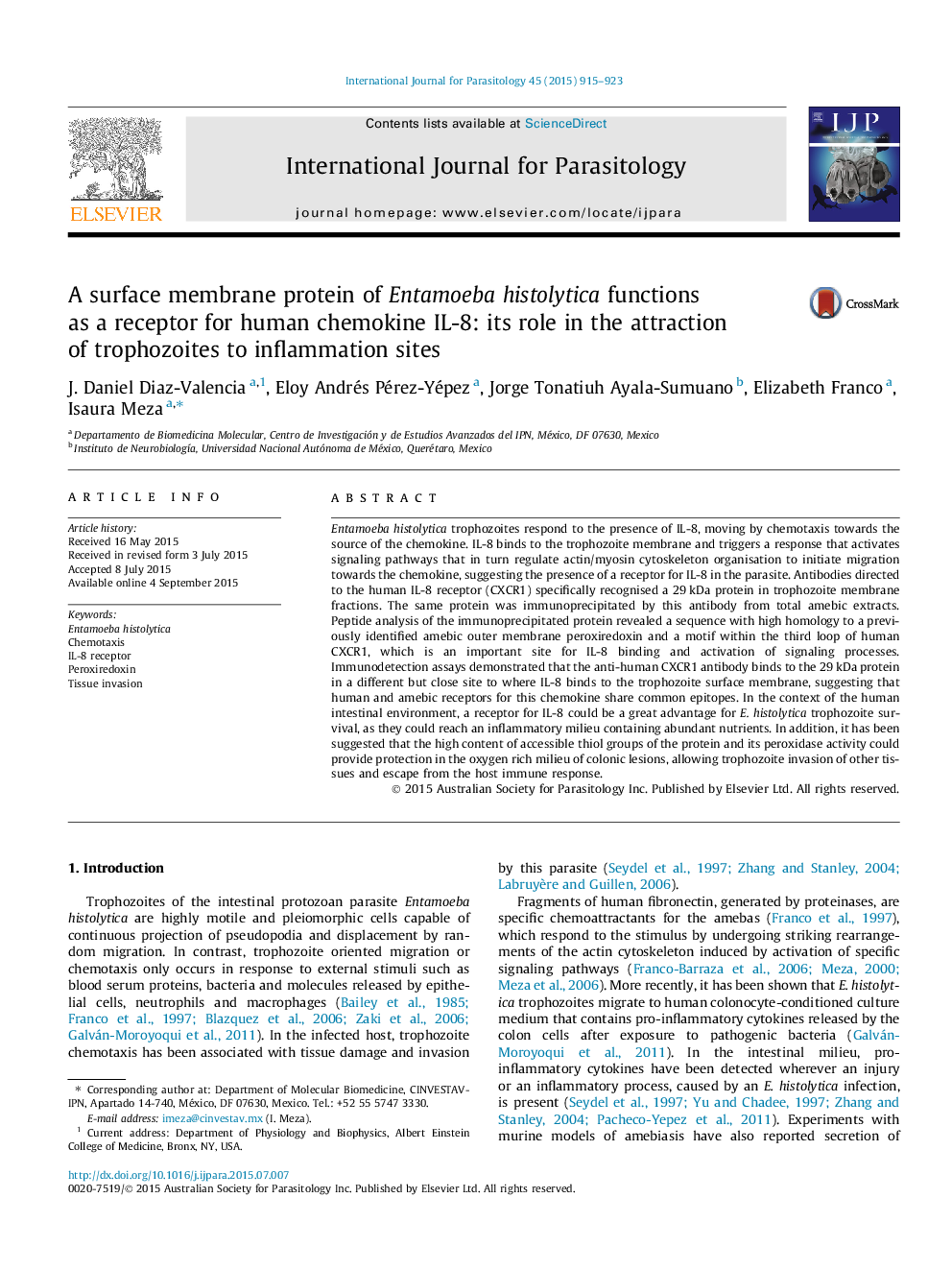| Article ID | Journal | Published Year | Pages | File Type |
|---|---|---|---|---|
| 2435987 | International Journal for Parasitology | 2015 | 9 Pages |
•Specific chemotaxis of Entamoeba histolytica trophozoites to human chemokine IL-8.•Binding to IL-8 activates signal transduction in trophozoites.•A 29 kDa protein is the main amebic molecule recognised by anti-human-CXCR1 antibody.•An IL-8 binding motif present in human CXCR1 sequence is present in the amebic protein.•IL8 and anti-CXCR1 antibody bind to the 29 kDa protein in different but close sites.
Entamoeba histolytica trophozoites respond to the presence of IL-8, moving by chemotaxis towards the source of the chemokine. IL-8 binds to the trophozoite membrane and triggers a response that activates signaling pathways that in turn regulate actin/myosin cytoskeleton organisation to initiate migration towards the chemokine, suggesting the presence of a receptor for IL-8 in the parasite. Antibodies directed to the human IL-8 receptor (CXCR1) specifically recognised a 29 kDa protein in trophozoite membrane fractions. The same protein was immunoprecipitated by this antibody from total amebic extracts. Peptide analysis of the immunoprecipitated protein revealed a sequence with high homology to a previously identified amebic outer membrane peroxiredoxin and a motif within the third loop of human CXCR1, which is an important site for IL-8 binding and activation of signaling processes. Immunodetection assays demonstrated that the anti-human CXCR1 antibody binds to the 29 kDa protein in a different but close site to where IL-8 binds to the trophozoite surface membrane, suggesting that human and amebic receptors for this chemokine share common epitopes. In the context of the human intestinal environment, a receptor for IL-8 could be a great advantage for E. histolytica trophozoite survival, as they could reach an inflammatory milieu containing abundant nutrients. In addition, it has been suggested that the high content of accessible thiol groups of the protein and its peroxidase activity could provide protection in the oxygen rich milieu of colonic lesions, allowing trophozoite invasion of other tissues and escape from the host immune response.
Graphical abstractFigure optionsDownload full-size imageDownload high-quality image (93 K)Download as PowerPoint slide
